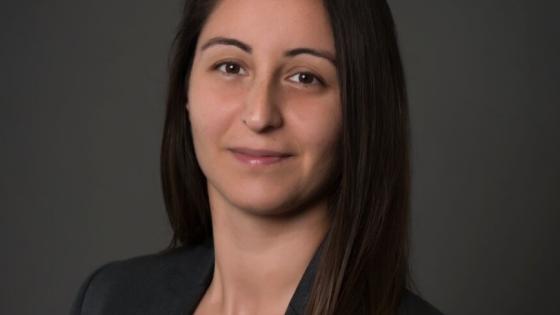A growing share of the population identifies as gender diverse (e.g. transgender, non-binary, or genderqueer). Recent estimates suggest that 0.3% of US adults over 50 identify as gender minorities, but that percentage is much higher among younger cohorts: it is 1.6% among individuals 30–49 and 5.1% among adults under 30 (Brown 2022). There is little economics research on these gender diverse individuals, perhaps given the limitations on how data has been collected.
The small body of literature that does exist in economics about this population documents that gender diverse individuals face considerable economic challenges (e.g. Lewis et al. 2017, 2022, Badgett et al. 2021, Aksoy et al. 2022, Badgett et al. 2023). Given the worse economic outcomes faced by gender diverse individuals and their increasing representation in the population, there is a critical need for more research on their economic experiences, behaviours, and beliefs.
To help fill this gap, in a recent paper (Aksoy et al. 2024) we conducted two studies that explore how gender diverse individuals view their own performance and ability. In particular, motivated by a focus of prior work on gender differences between men and women in confidence (Barber and Odean 2001, Niederle and Vesterlund 2007) and in self-evaluations of ability and performance (Exley and Kessler 2022), we explore the confidence and self-evaluations of gender diverse individuals and compare their responses to the responses of those who identify as men and women.
Studying confidence and self-evaluations is critical, particularly given their significant influence on academic and labour market outcomes (e.g. Chen et al. 2017, Reuben et al. 2017, Kamas and Preston 2018). Extensive literature in economics has explored the gender differences in confidence and self-evaluations between men and women in stereotypically male-type domains such as math and science (e.g. Barber and Odean 2001, Niederle and Vesterlund 2007, Exley and Kessler 2022). In these domains, women are typically found to be less confident in their performance and ability and provide lower self-evaluations than men. In our paper, we extend this literature by considering gender diverse individuals and documenting gender-minority gaps in confidence and self-evaluations.
We looked at both middle and high school students as well as adults in the US. For our study involving students, we teamed up with the Character Lab Research Network and collected data from 10,807 students. Among these, 1.7% of students (180 students) self-identify their gender as something other than male or female. In a separate online study with adults, we recruited 1,494 participants with a protocol that oversampled gender minorities. Among this group, 22.1% of subjects (330 subjects) identify as gender minorities.
In both studies, participants first took a maths and science test, answering a series of multiple-choice questions. After the test, we asked them survey questions to determine how confident they felt about their performance and how they judged their ability and performance on the test.
The gender diverse students thought they answered fewer questions correctly compared to male students, even though their actual performance on the test was similar. They also had a less positive view of their own performance. For example, they were less likely than male students to agree with the statement that they performed well on the test. Similarly, they reported being less inclined to take a class that involved the maths and science topics covered in the test, and they believed they would be less likely to succeed in such a class than similarly performing male students.
These gender-minority gaps are sizeable. Indeed, they were larger than the gender gaps in confidence and in self-evaluations we identified between male and female students. These gender-minority gaps also stay consistently large even after we provide information to students about their actual performance on the test.
Our findings are similar when we compare the confidence and self-evaluations of adults. Compared to similarly performing male adults, gender-minority adults believe they answered fewer questions correctly, were less likely to agree that they performed well on the test, less likely to apply for a job that would require them to perform well on the test, and believe they would be less likely to succeed in such a job. These gender-minority gaps again stay consistently large even after we provide information on individuals’ actual performance on the test.
We also find that the domain of the task is important in generating these gender-minority gaps. Specifically, when we had adult subjects complete a test that focused on verbal skills (testing on a subject that is not stereotypically considered ‘male’, like many STEM subjects), gender diverse adults were just as confident and rated their performance just as highly as the men who performed equally well on the test.
Understanding the roots of these gender-minority gaps is crucial, and we hope future research can focus on the potential causes of these gaps. It is also equally important to look more closely at the different groups within the LGBTQ+ community. For example, future research might focus on people who identify as gender non-binary, transgender men, or transgender women, as well as sexual-minority individuals such as lesbian women, gay men, or bi-sexual individuals. Future work may also investigate how to create more inclusive environments (for related discussions, see research by Vidal-Fernandez et al. 2021 and Ostry and Lagarde 2018).
A step forward in supporting this much-needed research came in January 2023, when the US Office of the Chief Statistician released its "Recommendations and guidance for federal agencies on the current best practices for collecting self-reported sexual-orientation and gender-identity data on federal statistical surveys" (White House 2023). It is important for federal agencies and researchers to collect data on sexual and gender identity. Designing survey questions in a more inclusive way acknowledges the existence and importance of sexual and gender minorities. It also helps create and modify laws and policies to address the needs and challenges of these individuals. Finally, such data are essential for analysing and understanding the socioeconomic lives and experiences of these sexual- and gender-minority individuals.
References
Aksoy, B, C S Carpenter, and D Sansone (2022), “Understanding labor market discrimination against transgender people: Evidence from a double list experiment and a survey”, NBER Working Paper 30483.
Aksoy, B, C Exley and J Kessler (2024), “The Gender Minority Gaps in Confidence and Self-Evaluation”, NBER Working Paper 32061.
Badgett, M V L, C S Carpenter, M J Lee, and D Sansone (2023), “A review of the economics of sexual orientation and gender identity”, Journal of Economic Literature, forthcoming.
Badgett, M V L, C S Carpenter, and D Sansone (2021), “LGBTQ economics”, Journal of Economic Perspectives 35(2): 141–70.
Barber, B M, and T Odean (2001), “Boys will be boys: Gender, overconfidence, and common stock investment”, Quarterly Journal of Economics 116(1): 261–92.
Brown, A (2022), “About 5% of young adults in the US say their gender is different from their sex assigned at birth”, Pew Research Center.
Chen, W, W A Grove, and A Hussey (2017), “The role of confidence and noncognitive skills for post-baccalaureate academic and labor market outcomes”, Journal of Economic Behavior and Organization 138: 10–29.
Exley, C L, and J B Kessler (2022), “The gender gap in self-promotion”, Quarterly Journal of Economics 137(3): 1345–81.
Kamas, L, and A Preston (2018), “Competing with confidence: The ticket to labor market success for college-educated women”, Journal of Economic Behavior and Organization 155: 231–52.
Lewis, D C, A R Flores, D P Haider-Markel, P R Miller, and J K Taylor (2022), “Transitioning opinion? Assessing the dynamics of public attitudes toward transgender rights”, Public Opinion Quarterly 86(2): 343–68.
Lewis, D C, A R Flores, D P Haider-Markel, P R Miller, B L Tadlock, and J K Taylor (2017), “Degrees of acceptance: Variation in public attitudes toward segments of the LGBT community”, Political Research Quarterly 70(4): 861–75.
Niederle, M, and L Vesterlund (2007), “Do women shy away from competition? Do men compete too much?”, Quarterly Journal of Economics 122(3): 1067–101.
Ostry, J D, and C Lagarde (2018), “The macroeconomic benefits of gender diversity”, VoxEU.org, 5 December.
Reuben, E, M Wiswall, and B Zafar (2017), “Preferences and biases in educational choices and labour market expectations: Shrinking the black box of gender”, Economic Journal 127(604): 2153–86.
Vidal-Fernandez, M, D Yengin, and R Megalokonomou (2021), “Why having more women/diverse economists benefits us all”, VoxEU.org, 11 November.
White House (2023), Recommendations on the Best Practices for the Collection of Sexual Orientation and Gender Identity Data on Federal Statistical Surveys, Office of the Chief Statistician of the United States.






